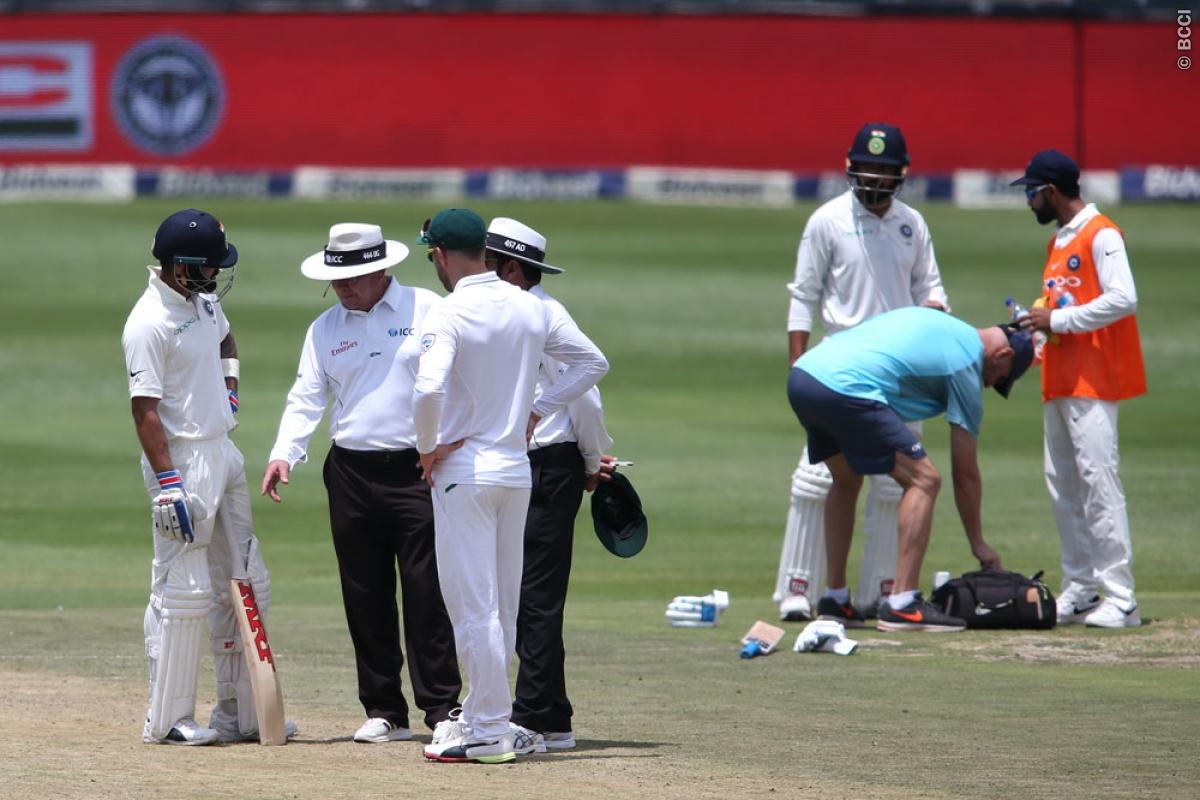India vs South Africa | Should the match have been abandoned in the third innings?

After all the criticism faced by the "poor spinning Indian wickets", SA has produced a terrible wicket for the 3rd Test of the series. On Day 3, the cracks started to widen up, bounce became more inconsistent and it was evident from the sheer number of body blows suffered by the Indian batsmen.
Despite the Centurion wicket being slammed by the cricketing fraternity for providing inconsistent bounce, it seemed that the Wanderers curator didn’t learn anything from the same. Bethuel Buthelezi, who took over the ground preparation duty from Chris Scott in the 2015-16 season, also got Scott as the mentor for the final Test match of the series, but still managed to mess the things up. While it is sure that the ICC is going to give nothing but “poor” rating to the venue, it is only sad to see an iconic stadium like Wanderers - the stage for many epics – in such a condition.
On Day 3, cracks started to widen more and bounce became more inconsistent and that was evident from the fact that India’s batsmen took a significant number of blows on the gloves and body. But the umpires - Ian Gould and Aleem Dar - after holding a discussion with both the skippers on the field during the morning session, decided that the game should go on.
The most concerning area on the wicket appeared when bowlers bowled from one particular end of the wicket and hit the good length spot when batsmen were standing in the Corlett Drive End. The first sign of the apparent disaster came in the fourth over of the day when an away-going delivery removed a piece of the pitch before beating the outside edge of Cheteshwar Pujara's bat.
When Kagiso Rabada was bowling from the Golf Course End, the second delivery of his second over of the day hit the danger patch and rose awkwardly to hit Kohli on the gloves. Although Gould had a word with Kohli, Rabada again hit Murali Vijay’s gloves four overs later and what if I tell you Vijay was hit a total of five times during his 127-ball stay.
However, as per ICC and MCC's Law 6.4, the chances for changes to be made to the pitch, that will only act if both captains agree and can only come into the effect after the umpires declared it dangerous and the captains mutually decided that they did not want to continue with the current state of the pitch.
Seeing the condition of the wicket, Michael Holding, on air, rated the wicket, "2 out of 100", and while speaking to journalists, Cricbuzz reported him as saying, "It's a s**t pitch. You can interpret that. They should have called it off when (Murali) Vijay got hit. This is not a cricket pitch, this is dangerous. Call it off, forget it. You can't play cricket on that. I have no idea what has gone wrong but I know it's not a good cricket pitch. The last time I saw something like this, the match was abandoned in Jamaica in 1998, and it didn't even last this long."
So, there lies the question - should not the match have been abandoned the moment when the ball awkwardly hit Vijay? However, ironically, the umpires found the wicket dangerous when Jasprit Bumrah's short of length ball rose from its position as much as it should have been and as Dean Elgar couldn't take his head away from that position, he was hit on the helmet grill. And as per the Law 6.4, if the match referee finds the only way of repairing wicket to get on with the game now, it will be too unfair on the visitors, who have given their all heart and blood to win this game.
And as Rahane suggested, the application, or the lack of it, shouldn't be considered as a leeway to take a decision which had failed to do so, when it was actually dangerous.

Comments
Sign up or log in to your account to leave comments and reactions
0 Comments